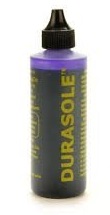Tuesdays with Tony
I found a hoof pick in the Clinic the other day. Upon inquiry to my humans, I learned what this odd thing was for. Apparently not only do horses not groom themselves, they also require you humans to clean their feet. Seriously, clean their feet!?!? I don’t understand why you humans put up with these crazy critters who can’t even clean their own feet. I clean my own feet several times daily, and do my own nails! This discussion about cleaning horse feet led to a discussion about thrush. I love thrush! They’re such tasty little birds. Ah, scratch that. I’ve just been informed we aren’t talking about birds. We are talking about an infection in horse’s feet. I learned a lot about thrush in horses today. Read on for my take on the situation.
Thrush: Well, that’s a funny name
Thrush is caused by a bacteria called fusobacterium necrophorum. Sometimes other bacteria come along for the ride too, but fusobacterium is the main culprit. Fusobacterium likes warm, moist places with little air movement, and some organic material to feed on. What does the bottom of your horse’s foot look like? A warm, moist place with some nice organic poop to feast on. The bacteria move on to the hoof itself after they eat the organic material, and that’s when the problems start.
Deep Canyons
Most people think of gooey feet when they think thrush. This is the most common presentation of thrush in the sulci down the sides of the frog. However, thrush can also get into the central sulcus and here is where it likes to make horses sore. Thrush can present here without all the goo. Typically it just appears as a very deep central sulcus. The problem with that really deep central sulcus is it feels like walking on a hangnail. You humans usually want your horses to perform in some way, and walking on a hangnail is not conducive to performance. At the bottom of that deep sulcus, the thrush can eat into the delicate soft tissues there creating a wound.

 Make the thrush go away
Make the thrush go away
Finally, the answers you’ve been seeking. There are several great, easy ways to treat thrush. Generally, my Docs first step is cleaning the foot daily and applying Durasole to any areas that appear a little deep. If the thrush is out of control, or there is a very deep central sulcus, they go to the cattle mastitis ointments called Today or Tomorrow. Either one seems to work great, and they come with a convenient applicator tip that goes right into those deep crevices. A little bit applied three to four times per week will clear up the thrush in no time. Every once in a while my Docs get a really bad case of thrush that requires treatment with antibiotics under bandages, but those are pretty rare.
Make the thrush stay away
What do wild horses do? This is a common question about all things horse. The answer for wild horses in this case: They don’t live in a stall. Standing around helps stuff pack into the crevices, giving fusobacterium a lovely place to live. Lots of turnout time and exercise help hooves flex and move which works to keep them clean and healthy. Equally important to turnout time is a good farrier. A good quality trim will keep the frog open and flexible. A good trim will also keep the heel height appropriate which is the key to a healthy frog.
I hear there’s an old saying that goes something like, without a foot, you don’t have a horse. Got questions about your horse’s hoof health? My Docs have answers! Now I’m off to clean my own feet.
Until next week,
— Tony
Tuesdays with Tony is the official blog of Tony the Office Cat at Springhill Equine Veterinary Clinic in Newberry, Florida. For more information, please call us at (352) 472-1620, visit our website at SpringhillEquine.com, or follow us on Facebook!

You must be logged in to post a comment.